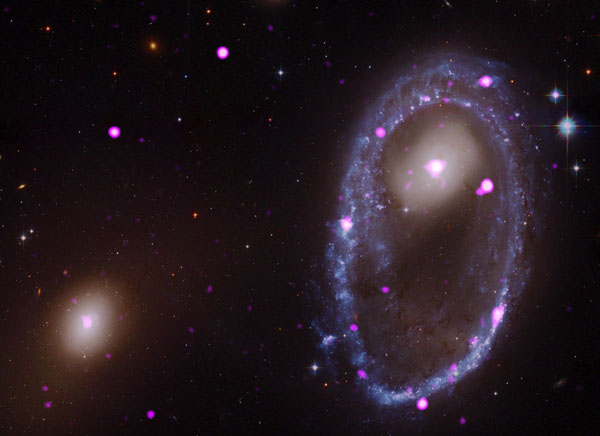A giant ring of black holes has been discovered 300 million light-years away, offering new clues about what happens when galaxies collide.
Using NASA’s Chandra X-ray Observatory, astronomers detected a very bright source of X-rays that is likely fueled by either a ring of stellar-mass black holes or neutron stars — the small, dense corpses left after stellar explosions, — according to a new study.
The bright X-ray source emanates from the ring galaxy AM 0644-741 (abbreviated AM 0644), which lies approximately 300 million light-years from Earth. By combining data from Chandra and NASA’s Hubble Space Telescope, astronomers created a composite image of X-ray and optical observations of the galaxy.
The observed ring of black holes or neutron stars is believed to be the result of a galaxy collision. The galaxies were likely drawn together by gravity, and the gravitational force from one galaxy created waves in the gas surrounding its neighbor, which, in this case, is AM 0644. The ripples would have then caused the gas to expand or clump together in denser areas, triggering the birth of new stars.



